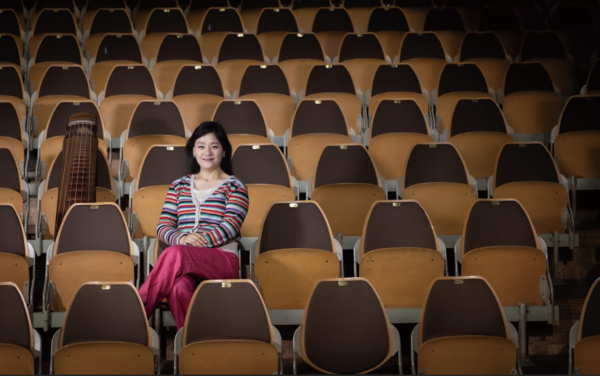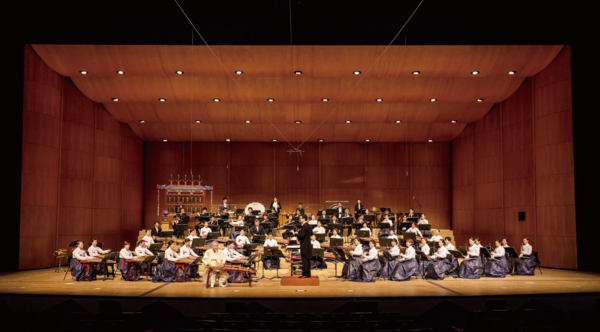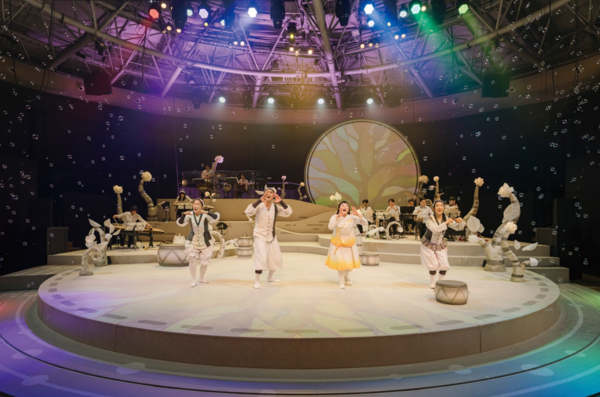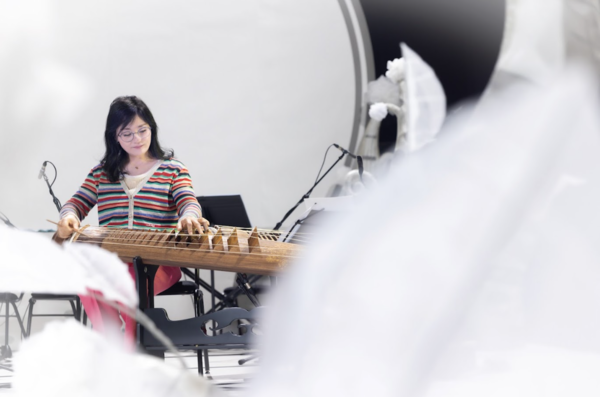National Gugak Orchestra Concertmaster Oh Kyung-ja (Department of Korean Trad토토사이트 회원가입 안시켜줌ional Music, Class of ’86)
The National Gugak Orchestra, a proud torchbearer of Korea’s traditional music, is celebrating its 30th anniversary this year. Among its founding members is Oh Kyung-ja, who has been with the orchestra every step of the way. As a geomungo (Korean zither) player, she has built a career rooted in passion, helping lead the modernization and popularization of gugak. We sat down with Oh to reflect on her journey.
By. Kim Hyunji / Photo. Son Chowon

■Discovering the geomungo—A lifelong companion
Hearing Oh Kyung-ja recount how she encountered gugak and the geomungo, one cannot help but think of words like “destiny” or “fate.” Everyone has their own story, but hers feels particularly compelling. Born the fifth of ten siblings in Gwangju, South Jeolla Province, she grew up listening to her much older eldest sister practice the gayageum from an early age. Though increasingly drawn to traditional music, she kept her desire to learn an instrument to herself, mindful of her family’s circumstances. Instead, she quietly listened to her sister play, occasionally sneaking a chance to touch the gayageum when her sister wasn’t home.
“My eldest sister started working as an instructor at a gugak academy after graduating from high school. That’s when I got the chance to formally learn the gayageum—starting in sixth grade. I looked forward to every visit to the academy after school. I didn’t really know what it meant at the time, but I used to say I wanted to become a ‘Human Cultural Asset.’ Thanks to my sister’s influence, four of us sisters ended up pursuing gugak.”
At the time, the lack of formal notation for traditional music made it difficult to learn, but Oh’s natural musical talent quickly became evident—so much so that she was soon teaching adult beginners. When her sister was scouted to teach in Seoul, she learned of the National High School for Korean Traditional Arts, where students could receive government-funded tuition.
“Looking back, it’s as if everything fell into place at just the right time—as if someone were guiding me. Back then, there weren’t many ways to learn about such schools. Thanks to my sister’s move to Seoul, I began preparing for admission. And more importantly, I changed my major to the geomungo after entering the school—which truly set me on my life’s path.”
The geomungo is a uniquely Korean instrument—modest, yet powerful in depth and resonance. I hope more people can discover its beauty.
Once immersed in the geomungo, Oh became a tireless student, honing her skills quickly. In 1985, during her senior year of high school, she entered the first Dong-A Korean Traditional Music Competition, aiming to test her abilities. Though she had only studied the geomungo for two years and the student category included college students up to age 20 under a Western-style age standard, she walked away with the Silver Prize—surpassing even college music majors. The Gold and Bronze Prizes that year went to students from Hanyang University’s Department of Korean Traditional Music.
“Winning that award helped me enter Hanyang University on a scholarship, which was a tremendous blessing for someone from a large family. I was fortunate to study under many great teachers at Hanyang, including Professor Jeong Dae-seok, principal of the KBS Traditional Orchestra and composer of the famous geomungo concerto Surije. I learned so much during my time there.”
■Choosing a different path, but never giving up
Even for Oh, the road was not always smooth. Though several gugak departments had been established in the 1980s, few professional ensembles or performance opportunities existed. After graduation, she struggled to find a place in the field. She married at 25 and soon had two children. Just as she was contemplating a life as a full-time homemaker, she saw an announcement in October 1994 for auditions to join the newly forming National Gugak Orchestra. Two months after giving birth to her second child, she took the audition—and restarted her journey with the geomungo.



“In the early days, the orchestra lacked a fixed structure, so we accompanied everything from pansori to dance performances. It was exhausting at times, but I truly loved performing. Eventually, I became principal player, then a board member, then concertmaster, and back to a regular member—before being appointed concertmaster again in July last year. This year, as we celebrate the 30th anniversary of the orchestra’s founding, it feels more meaningful than ever.”
After 30 years in the same institution and just as she was considering retirement, Oh was called upon to serve again as concertmaster—rekindling her passion. On March 12, the National Gugak Orchestra held its 30th anniversary concert under the theme “Best Collection,” revisiting beloved works from each era. The finale, Boat Song for Orchestra composed by founding director Park Beom-hun, was performed by 16 musicians from across the orchestra’s history, adding emotional weight to the celebration.
“The orchestra has gone beyond simply preserving tradition—we’ve pursued modernization and popularization. We’ve improved our instruments and tried many new things. In the early years, we couldn’t even fill concert halls with free tickets. Now, it’s hard even for the musicians to get tickets. Interest in gugak has grown significantly. We’ve also performed overseas through events hosted by the Ministry of Foreign Affairs and the Ministry of Culture, Sports and Tourism. I’m proud to have been part of gugak’s development.”
■A hope for wider love of the 토토사이트 회원가입 안시켜줌
Though Oh devotes much of her time to the National Gugak Orchestra, her activities don’t end there. Since 2018, she has served as artistic director for the Geomungo Byeongchang Club, founded by performers specializing in the geomungo, pansori, and percussion. The club creates and stages byeongchang performances (singing while playing the geomungo) to showcase the instrument’s full range of appeal. She also holds solo concerts and collaborates with various arts organizations.
“While the gayageum is the most widely recognized traditional instrument, I believe the geomungo best represents Korean music. The gayageum resembles China’s zheng or Japan’s koto, and the haegeum is similar to China’s erhu. But the geomungo is uniquely Korean. Its wooden body, six silk strings, and bamboo pick produce a natural, resonant tone. It’s a simple yet profound instrument capable of expressing deep human emotion.”
Oh has spent over 40 years with the geomungo—ever since her student days—and says she falls more in love with it each time she plays. Hoping to share the instrument with more people, she’s also committed to nurturing the next generation. With three years until retirement, she plans to bring quality education to underserved regions after concluding her time with the National Gugak Orchestra.
“Just as I benefited from wonderful teachers, I hope to become one myself. Teaching students has also taught me what kind of educator I want to be. I believe doing what you love brings no regrets—and gives you the courage to take responsibility for whatever comes next. I hope our juniors, too, will find a path they can pour their passion into.”
This article was published in the 2025 summer issue (No. 274) of HYPER, the official magazine of Hanyang Univers토토사이트 회원가입 안시켜줌y.

 '한양위키' 키워드 보기
'한양위키' 키워드 보기